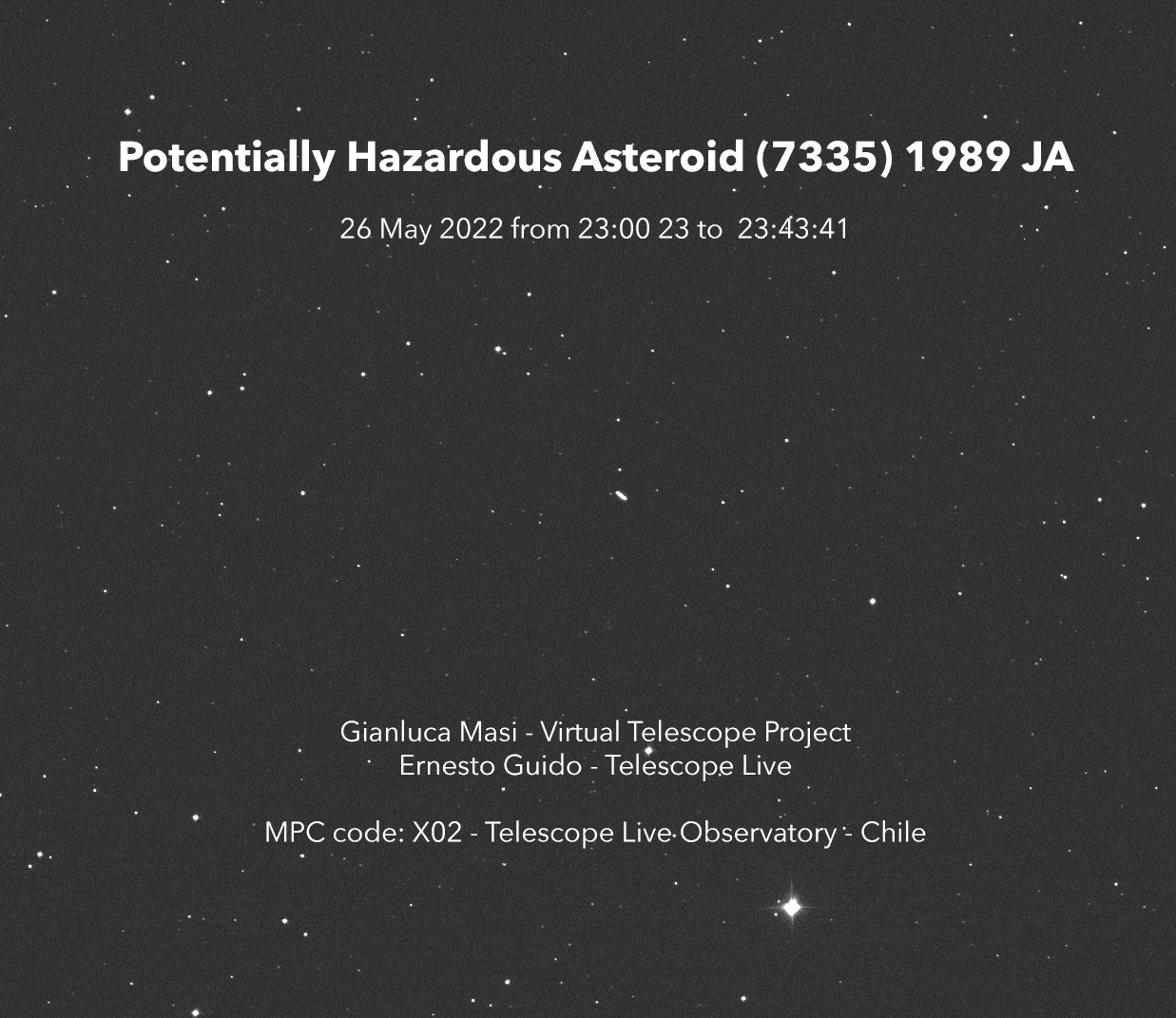Mile-wide asteroid 7335 (1989 JA), the largest yet of 2022, flies safely by Earth
There were no worries whatsoever about the space rock, which passed by at a very safe distance.

A mile-wide asteroid passed by Earth on Friday (May 27) at a distance about 10 times that of the space between the Earth and moon.
The asteroid, known as asteroid 7335 (1989 JA), is roughly four times the size of the Empire State Building and is the largest yet to pass by our planet in 2022. Viewers were able to catch the event live online through the Virtual Telescope Project (you can watch the feed embedded below), thanks to a new collaboration that includes telescopes in Chile, Australia and Rome.
"These two live feeds covering 1989 JA were possible thanks to the brand new
cooperation between the Virtual Telescope Project and Telescope Live," founder Gianluca Masi told Space.com. "They have several telescopes around the planet, under amazing skies."
Related: The greatest asteroid missions of all time!

Looking for a telescope for the next skywatching event? We recommend the Celestron Astro Fi 102 as the top pick in our best beginner's telescope guide.
At its closest, the asteroid was 2.5 million miles (4 million kilometers) away and it posed no threat whatsoever to our planet, despite its large size of 1.1 miles (1.8 km) across. It was bright enough to see in moderate-sized telescopes.
Improving tracking of these relatively small space rocks means we are getting better at catching any potential impacts before they happen, which is why it seems like there are so many space rocks going by us these days.
While asteroid 7335 (1989 JA) is technically classified as "potentially hazardous," that wasn't meaning to indicate an imminent threat to our planet. The designation refers to asteroids that are larger than 492 feet (150 meters), and the distance at which the asteroid approaches Earth, among other factors.
Get the Space.com Newsletter
Breaking space news, the latest updates on rocket launches, skywatching events and more!
Space agencies and telescopes around the world keep an eye on space rocks. This includes NASA's Planetary Defense Coordination Office. You can keep track of other prominent upcoming flybys, the curated list of asteroids that have a statistically improbable chance of impact, and the agency's Small-Body Database to learn more about asteroids in general.
NASA has found no immediate threats to worry about in the next 100 years, although the agency keeps its eye on the sky just in case.
Follow Elizabeth Howell on Twitter @howellspace. Follow us on Twitter @Spacedotcom and on Facebook.
Join our Space Forums to keep talking space on the latest missions, night sky and more! And if you have a news tip, correction or comment, let us know at: community@space.com.

Elizabeth Howell (she/her), Ph.D., was a staff writer in the spaceflight channel between 2022 and 2024 specializing in Canadian space news. She was contributing writer for Space.com for 10 years from 2012 to 2024. Elizabeth's reporting includes multiple exclusives with the White House, leading world coverage about a lost-and-found space tomato on the International Space Station, witnessing five human spaceflight launches on two continents, flying parabolic, working inside a spacesuit, and participating in a simulated Mars mission. Her latest book, "Why Am I Taller?" (ECW Press, 2022) is co-written with astronaut Dave Williams.









